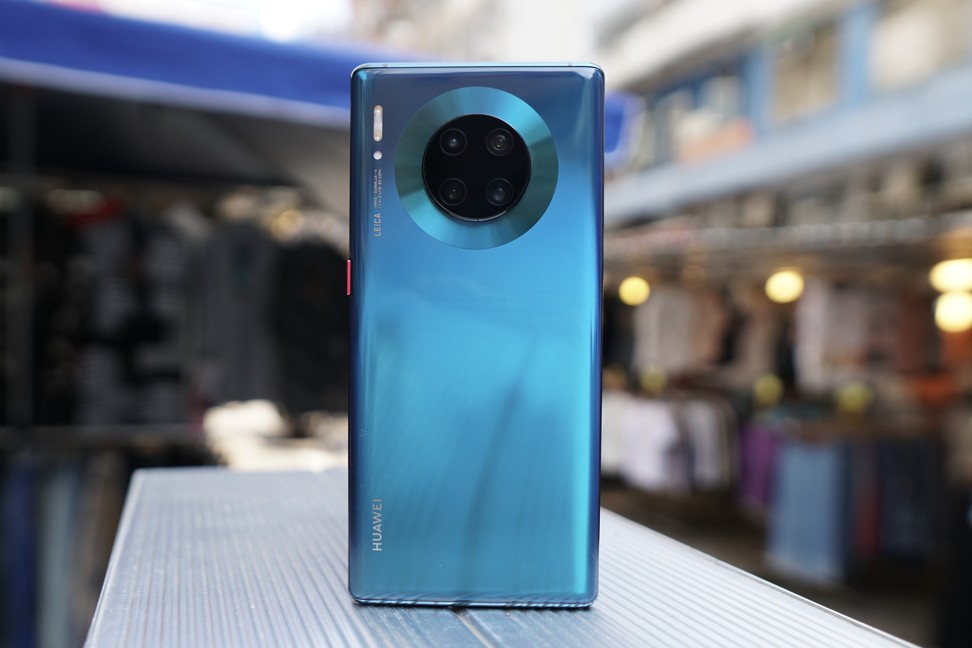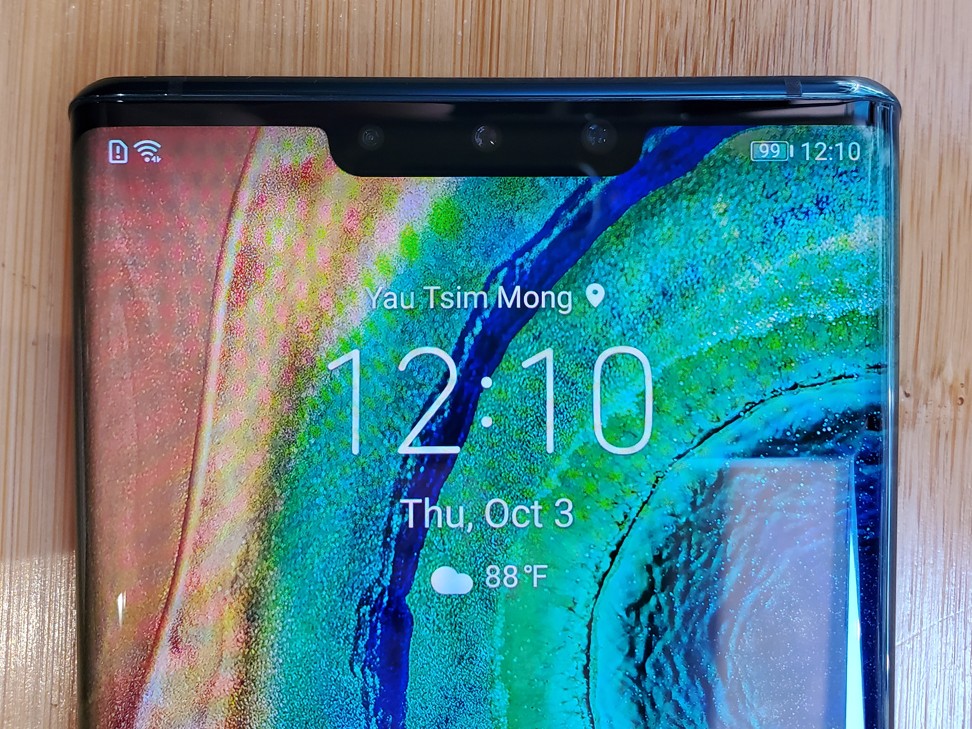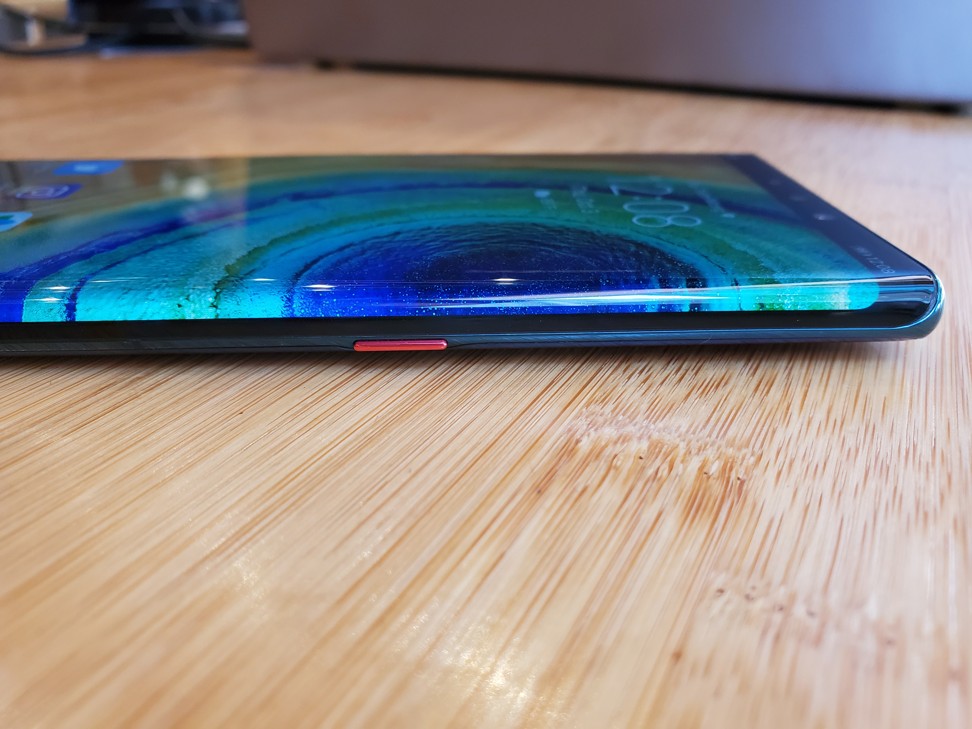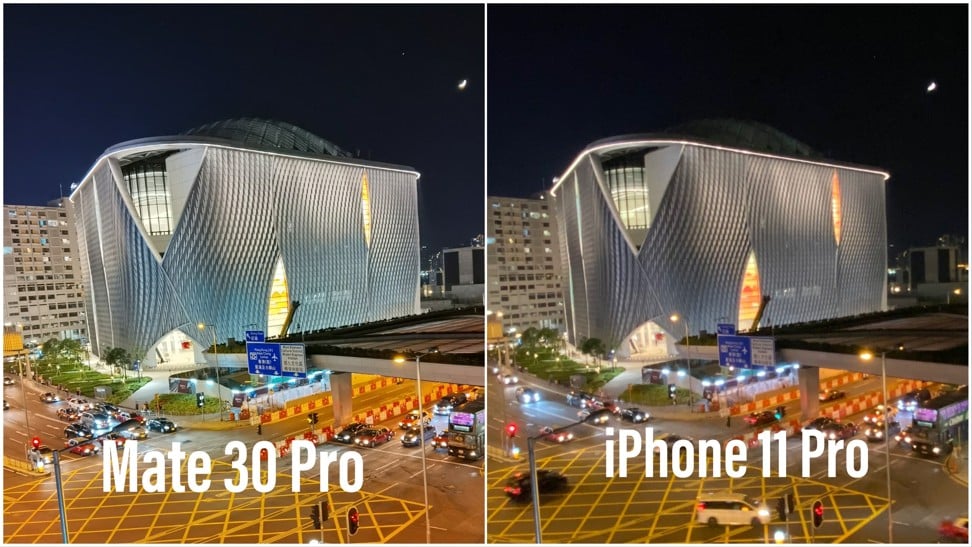
Huawei Mate 30 Pro full review: excellent handset, but lack of Google apps will be a deal-breaker for many
- Cameras, battery life and design are the best on the market, but US export ban that means there’s no official Google apps support makes phone useless for many
- It’s guaranteed to be a huge success in China, but don’t buy one until the Google issues are resolved

Huawei has been caught in its fair share of political and cybersecurity debates over the past year. And while opinions are divided, what’s undeniable is that the Chinese company has been making the best smartphones for the past couple of years in terms of their raw power and capabilities.
In fact, almost all the current hardware we expect in top-tier phones, such as a triple-camera system, enhanced zoom system, large battery, and computational-photography-assisted night shooting modes, were seen in a Huawei phone first.
Huawei’s latest top dog, the Mate 30 Pro, maintains this hardware excellence.
Were it not for the export ban imposed by the United States that prevents Huawei from doing business with Google, the Mate 30 Pro would easily be a top contender for phone of the year. Alas, software support is a major concern for this handset, and leaves a giant question mark over the device.

Design and hardware
The Huawei Mate 30 Pro follows the Huawei Mate 20 Pro’s unique design language, but has more of everything. The square, centrally placed camera module on the latter returns, but even bigger, and round, with a textured ring around it for added emphasis. The curved OLED screen of the Mate 20 Pro returns, but the curvature is more drastic, sloping down at the edges at a near 90-degree angles just like Vivo’s recent Nex 3.

There is, unfortunately, a rather large notch that eats into the 6.5-inch screen, but at least the cut-out houses a 3D facial scanning system that offers iPhone-like face unlock, and not the more simplistic 2D face scanning systems used in Samsung and Xiaomi handsets.
My gripe is that the Mate 30 Pro also packs a very fast and accurate in-display fingerprint reader, and to me this offers good enough security. I’d give up the 3D face scanning for a smaller notch if I could.
The phone runs on the Kirin 990 processor, Huawei’s newest, and in benchmark tests it outperforms Qualcomm’s current Snapdragon 855+ chip by a bit. In real world usage, however, the difference is negligible.

Because of the radical curvature of the screen edges, there is a slimmer-than-usual power button on the phone’s aluminium frame, and the traditional volume buttons have been eliminated.
To adjust volume, users have to double tap on either side of the screen to bring up a volume slider. This works fine when the screen is on, but there is no way to adjust volume when the screen is off. That is a hassle more than a feature.
Overall, the Mate 30 Pro is a gorgeous looking handset with premium build quality. The display, in particular, is mesmerising to look at, with visuals appearing to spill off the sides. It has my vote for best-looking phone on the market right now.

Software and features
This is where things get tricky. Huawei has been banned by the US government from doing business with Google, and the Mate 30 Pro ships without Google apps.
Plenty of Chinese phones sold in China do not ship with Google apps, but users can usually manually install them because those devices all have official Google framework support.
The Mate 30 Pro does not have such support, so the only way to install Google apps is to hack into the phone. For about 10 days following the device’s launch, a mysterious Chinese app hosted on a nondescript website did just that. But that site and app have since disappeared, and at the time of writing, there is no way to install Google apps on the Mate 30 Pro.
I managed to install Google apps before that Chinese app vanished, so my unit has been running fine and operating like any other handset.
For the most part, the open-source version of Android used here feels like “normal” Android, and Huawei’s EMUI skin on top runs smoothly and is relatively clean and useful.
There’s a visually appealing “dark mode”, swipe gesture navigation works well, and Huawei includes some useful features such as double tapping the screen with a knuckle to grab a screenshot. Other Android skins such as OnePlus’ OxygenOS or Oppo’s ColorOS are still better in my opinion, but EMUI is fine.
Performance and battery life
The Mate 30 Pro is a powerhouse in every aspect. Battery life – as can be expected from a Huawei phone – is phenomenal. I routinely finish 12-hour days with 40 per cent battery left.
The camera system has numbers that trumps everyone else’s spec sheet. The main lens remains mostly unchanged from the Huawei P30 Pro: a 40-megapixel f/1.6 RYYB lens that can pull in light in scenes where other phones just see darkness.
The big upgrade is to the wide-angle camera, a 40-megapixel lens with a 1/1.54-inch sensor (significantly larger than the sensors on Samsung’s Galaxy Note 10 or Apple’s iPhone 11 series). Completing the quad-camera array are an 8-megapixel telephoto lens with a 3D TOF (time-of-flight) sensor.
As has been the case with the last three Huawei flagship handsets, the Mate 30 Pro’s camera hardware is absolutely best in class and overpowers rivals just by sheer pixel count and sensor size alone.
This is apparent in wide-angle images, which by virtue of their short focal length are always going to be less sharp and balanced than the main camera. The Mate 30 Pro makes that gap much less noticeable.

The iPhone 11 still does a better job of keeping colour science and dynamic range consistent across all its lenses, but just comparing wide-angle images, Huawei’s is far more detailed. Samsung’s latest wide-angle camera fares no better against the Mate 30 Pro’s in terms of clarity.
Of course, hardware is only half the story when it comes to camera performance, and in some instances Huawei’s software still flubs basics such as dynamic range. I think the best way to summarise the Mate 30 Pro’s main camera system is that it’s got a much higher ceiling than other phones, but also a lower floor. If you know what you’re doing, the Mate 30 Pro can do things no other phones can dream of.
Here’s an example: in slow motion videos, the more frames-per-second (fps) crammed into the video the better, as it allows footage to be slowed down without choppiness. Most smartphones, including the iPhone 11, can shoot slow motion videos at 240fps. Samsung’s flagship phones can do 960fps, which grabbed plenty of headlines last year.
The Mate 30 Pro? It can capture slow motion footage at 7,680fps. That is not a typo – the Mate 30 Pro’s slow motion videos can go eight times slower than Samsung’s, which was already very impressive. The Mate 30 Pro’s slow motion footage can be so slow, in fact, it almost appears as if time has stood still, as can be seen in the video sample below.
The Mate 30 Pro’s general video camera is an improvement on that used in previous Huawei devices too, but stabilisation still falls short of that on the iPhone 11 Pro’s industry-best video camera.
Back to still imaging, and Huawei’s zoom lens is still better than others, producing a noticeably clearer 10X zoom image than rivals.
Conclusion
The sleek, gorgeous, powerful Mate 30 Pro would easily be one of the very best phones on the market right now were it not for the US export ban.
There are still sizeable chunks of the world’s population for whom not having access to Google apps isn’t a big deal – people in China, for example, or loyal iOS users. But for many Android users around the globe, the absence of official Google support is a deal-breaker.
Huawei knows this, as it has delayed the international roll-out of the Mate 30 Pro. Huawei’s marketing team insists a global release will happen, so perhaps they’re confident the Google issue will be resolved soon. I suggest interested consumers wait and see.
Dimensions: 158.1mm x 73.1mm x 8.8mm
Weight: 198 grams
Display: 6.5-inch 1,176 x 2,400 pixel OLED panel
Battery: 4,500 mAh
OS version reviewed: Android 10 (open source version) with EMUI 10 on top
Processor: Kirin 990
Cameras: 40-megapixel f/1.6 main sensor; 40-megapixel f/1.8 wide-angle lens; 8-megapixel f/2.4 telephoto lens; TOF sensor; 32-megapixel selfie lens
Memory: 128/256GB ROM; 8GB RAM
Colours: black, blue, silver, purple
Price: 5,799 yuan (8GB+128GB); 6,299 yuan (8GB+256GB)
For more insights into China tech, sign up for our tech newsletters, subscribe to our Inside China Tech podcast, and download the comprehensive 2019 China Internet Report. Also roam China Tech City, an award-winning interactive digital map at our sister site Abacus.